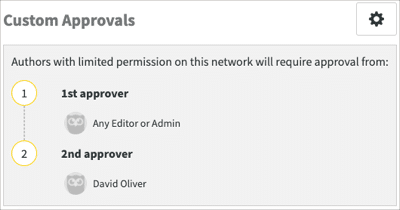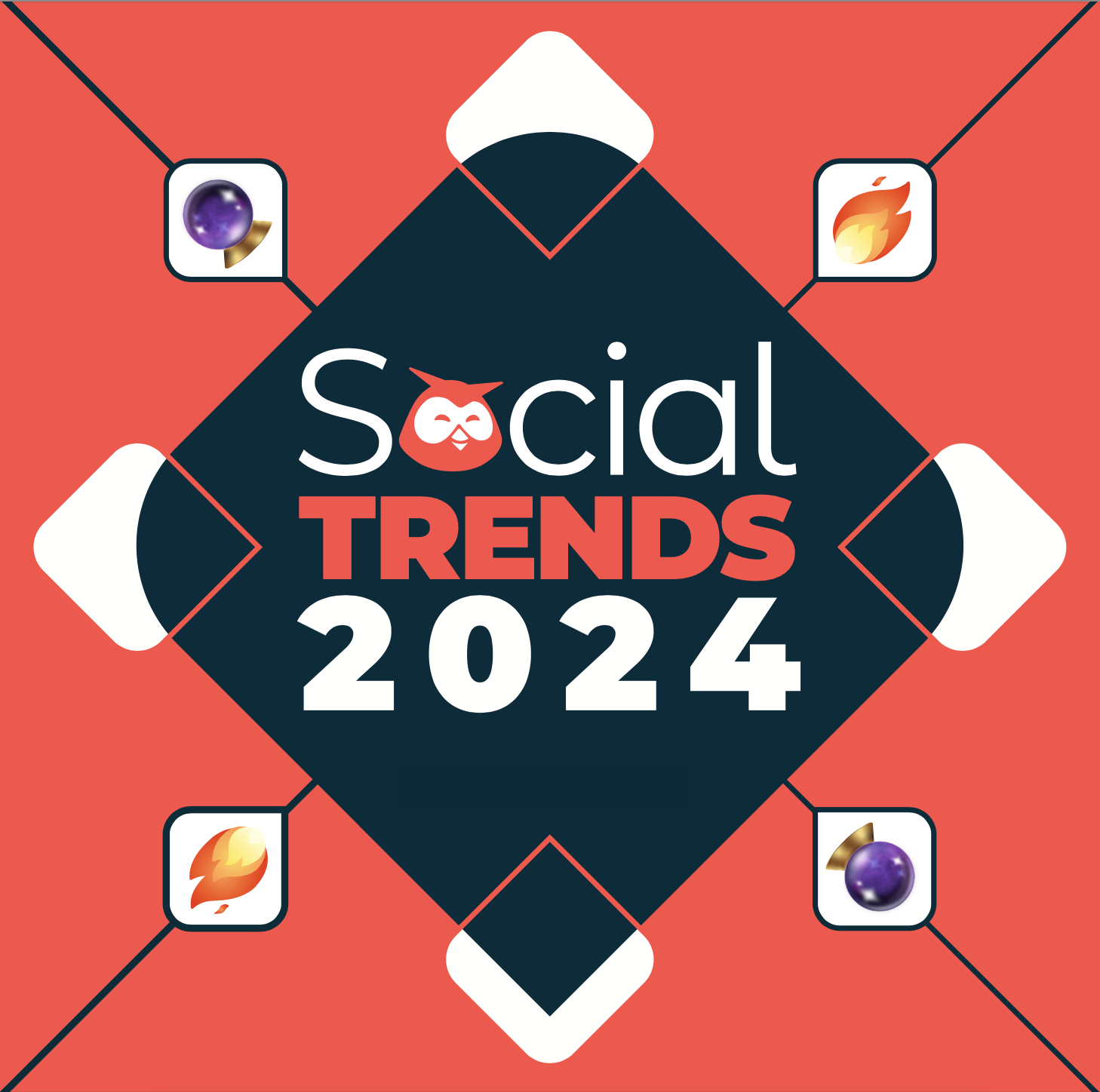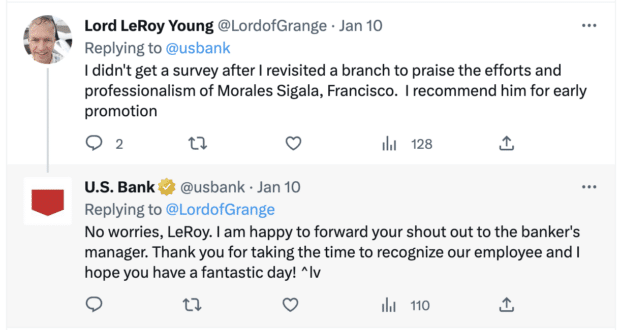8 tips for building a social media strategy for banks and financial institutions
As a marketer working in financial services, you know that navigating bank social media accounts can be tricky. Balancing compliance regulations with creative ideas for effective content marketing is no small feat. It gets even trickier if you’re managing multiple channels.
Fortunately, we’ve got some helpful tips to make the job easier. Whether you’re looking for new ways to engage customers on Instagram, build brand awareness on TikTok, or just trying to figure out what tactic will work best on Twitter, these seven tips will help you get started.
Grow your client base with the tool that makes it easy to sell, engage, measure, and win — all while staying compliant.
Why social media is different for banks and credit unions
Banking is a heavily regulated industry. Your banking social media strategy is going to need a different touch from, say, a TikTok teen posting their mall haul.
As a marketer or social media manager who runs social media for a bank (or credit union), there are a few things you need to be aware of. Most importantly, your content and strategy must meet federal regulations. Or, depending on where you are operating, the regulations of your governing body.
Financial sector laws typically treat the internet as a marketing channel. This means everything from your website to your social media accounts must comply with the marketing regulations specific to your industry.
Stringent laws and regulations are enough to think about. On top of that, as a social media marketer working in banking, you have to consider social media-specific compliance and social strategy as well.
Building a social media strategy for banks and financial institutions: 7 tips
Building a social media marketing strategy can often feel daunting for banks and financial institutions. You have to navigate the complexities of digital marketing. And create content that resonates.
Here are a few tips to help you kick off your social media strategy.
A platform that can help you mitigate risk, save time, and stay organized? If that isn’t an easy yes, I don’t know what is.
Using one central, controlled platform for all of your social media channels is going to help you operate more efficiently and securely, centralize your compliance oversight, protect investor and consumer information, and make it easier for your team to navigate your social channels.
Of course, we’re biased, but we would be remiss if we didn’t suggest Hootsuite for your financial social media needs.
Hootsuite’s a popular social media management platform for highly regulated industries, thanks to our operational efficiencies, robust ecosystem of partner apps, custom permissions and approval workflows, and comprehensive compliance solutions.
Plus, Hootsuite is compliant with industry regulations, including FINRA, FCA, FFIEC, IIROC, SEC, PCI, AMF, and MiFID II requirements.
Book a free Hootsuite demo today
2. Educate your internal team
Include a phase in your strategy dedicated to educating your internal social media team on your industry’s regulations and your own social media guidelines.
If your team members understand what compliance looks like, they will be far less likely to accidentally post something that may get you in trouble.
Hootsuite can make this easier, too. Amplify, our employee advocacy platform, allows content admins to push a steady stream of pre-approved, curated content that your employees can share to their own social accounts.
Amplify’s a great way to extend your organization’s reach while reducing risk with on-brand, compliant content.

Book your free demo of Amplify by Hootsuite
A social media governance policy lays out the rules of engagement for all employees. This can be a document outlining all of the ‘needs to know’ for your content creators. It should align with your guidelines for email, text, and all other communications with clients and the public. Your governance policy will help you operate within your industry’s regulations.
Since social media management is part of the company’s overall security and compliance policies, the chief information officer and chief risk officer may be involved in creating your social media governance policy.
Hootsuite can even partner with you to deliver custom social media governance training for your employees.
Bonus: Download a free bundle of social media tools designed specifically for financial services — including post ideas and templates for social media policies, strategies, and reports.
Social media advertising is a great equalizer, especially for those in the financial sector. You’re not limited by area code, event invitations, or any other space-driven barrier. You can reach all people of all economic statuses who have access to the platform.
This means you can spearhead Diversity, Equity, and Inclusion (DE&I) initiatives that can reach all manner of people. Perhaps this is a “Financial Literacy for All” campaign designed to level the investing playing field. Or maybe you’ve noticed you’re not reaching a certain demographic and so choose to target them with a campaign.
TD, for example, executed a campaign that used cricket, a popular South Asian sport, to connect with a wider South Asian demographic.
DE&I initiatives will inherently help you to stay compliant with (and even celebrate) regulations like Regulation B, the Equal Credit Opportunity Act.
The Equal Credit Opportunity Act states that as a creditor, you may “affirmatively solicit or encourage members of traditionally disadvantaged groups to apply for credit, especially groups that might not normally seek credit from that creditor.” A properly managed DE&I campaign can do exactly that.
5. Create content pillars relevant to your audience
Creating content pillars provides a solid foundation for your strategy. It gives you an idea of what your overall page should look like and a starting point for creation.
By centering in on themes that resonate with your audience, you’re providing guidelines that keep your posts focused, creative, and relevant.
It’s important to take into account the various platforms you use when deciding which content goes where, such as informative how-tos or fun polls.
If you want to streamline the process even further, set up content libraries stocked with pre-approved templates, media assets, and ready-to-publish content.
6. Set up a check system
Having only one person responsible for creating and publishing social media content is a good way to make a mistake. Create a system where people or teams are needed to approve new posts, comments, or replies before they get published.
With Hootsuite, you can define approval workflows for each of your social accounts, so nothing goes out the door without first being checked by your compliance officers or an approved member of your team.
You can learn how to do this through the Set up an approval process.

Source: Hootsuite
7. Have a backup for your backup plan
In the age of social media, having a financial institution without a crisis management plan is like setting sail without a life raft: ill-advised and prone to disaster.
Creating a crisis management plan isn’t just wise; it’s essential. It’s also good practice to have plans A, B, and even C, as you can never be quite sure when Murphy’s Law might rear its ugly head.
When dealing with tricky customer inquiries or defamatory posts on social media, having a crisis management plan will help prevent the damaging spread of information and reassure your customers that their money is in safe hands.

Get a glimpse into the future of financial services on social media and build a strategy you can bank on.
Get the reportGreat ways to use social media for financial institutions
Yes, there may be a lot of rules in place, but that doesn’t mean there aren’t still a ton of ways to entertain your audience. Here are five ways you can inject some fun into your bank or credit union social media strategy.
Celebrate your audience’s triumphs
Who doesn’t love to be celebrated? You can shout out your audience on their milestones or accomplishments. You can do this in a few different ways.
If someone tags your account in a celebration post (like a successful mortgage application!), ask for permission, then repost it. We’ll go over more on user-generated content (UGC) below.
You can generally shout positive affirmations into the social media abyss, like Chime. While this may not directly impact customer relationships, it will help to shape your brand as a caring one.
You can also take a more active role in celebrating your audience, like the Royal Bank of Canada (RBC) did with The Black Atlantic Experience.
The Black Atlantic Experience shares the stories, challenges, and triumphs of some of Atlantic Canada’s emerging Black leaders. It celebrates the people at the center of the stories’ narratives while exploring and addressing the issues they face, notably systemic and overt racism. By not shying away from heavy subjects, these stories give more power to the subjects’ triumphs.
Educate your audience
Use your social media platform as a way to raise financial literacy. You can offer your followers a unique opportunity to level up their financial strategies. Offer valuable advice and make it so that staying up-to-date with your posts can help them to be better informed.
You’ll want to provide helpful guidance about budgeting or saving for the future in an easy-to-digest format. Take Chime, for example. They created a brightly-designed carousel dedicated to helping you understand your taxes.
Use UGC to help your audience feel seen
Brands everywhere capitalize on UGC to make audiences feel seen. It has the added benefit of implying social trust in your audience. Before you repost your audience’s content, be sure to ask for permission. It’s just good manners.
Today we participated in the ribbon cutting for the new US Bank located in downtown Hamilton! Thanks for having us @usbank 💙 pic.twitter.com/KXDQBj9ABi
— Hamilton High Cheer (@HHSBigBlueCheer) November 16, 2022
Don’t be afraid of humor
Let’s face it: Financial content can be dry. But that doesn’t mean your voice needs to be stiff and professional.
We can feel your fear through the computer; you’re saying, “There is no way I’ll get approval to post memes on my bank’s Twitter feed.” Don’t worry. We’re not telling you to use the platform for anything off-brand.
Besides, if something feels like too much for your brand, then it’s probably going to come across as trying too hard. But there are so many levels of humor; you can be lighthearted without sacrificing professional integrity. Take the U.S. Bank on Twitter, for example. They use light, family-friendly humor that doesn’t come across as too much.
Look out Bob the Builder!😁 https://t.co/ce98DeI8a2
— U.S. Bank (@usbank) November 17, 2022
Now, take the Plum money app on TikTok, for example. They have a different (likely younger) audience and take a different tone than the U.S. Bank. Both are light-hearted but meant for different audiences.
@plumapp it takes minutes 👀
The takeaway here is to know your audience and your brand, then adapt your social media voice to appeal to both.
Engage with your audience
The beautiful thing about social media is that it’s a two-way street. People are reaching out to you who want to engage. Good customer service isn’t just about fielding complaints, either. Being open and receptive to conversations humanizes your institution and helps build customer loyalty.

Source: U.S. Bank on Twitter
Hootsuite makes social marketing easy for financial service professionals. From a single dashboard, you can manage all your networks, drive revenue, provide customer service, mitigate risk, and stay compliant. See the platform in action.
Get more leads, engage customers and stay compliant with Hootsuite, the #1 social media tool for financial services.
Book a Demo



